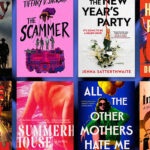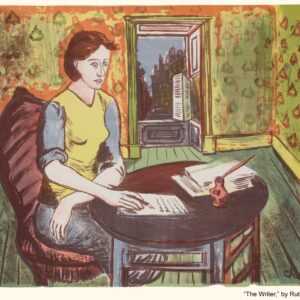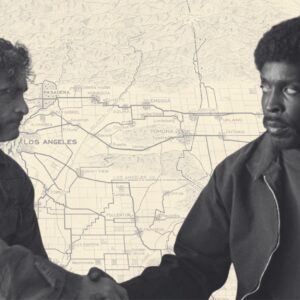
A Book List for Black Dreams and Black Time
Gabrielle Civil on the Books You Need for Black History Month and Beyond
Happy Black Futures Month! To talk about Blackness (Blackness, African-Americanness, Afrikanness, my people) is always to invite time travel and movement, flyness and invention. This is especially true in our literary traditions. From the griots through Afrofuturism and beyond, Black literature—in its resplendent diversity—offers inspiration, respite, and strategy.
In my latest book the déjà vu, I explore my own relationship to temporality and imagination as a Black feminist performance artist, poet, and writer. Invoking Langston Hughes, Audre Lorde, Martin Luther King, Jr., and the inimitable Wanda Coleman, I traverse my Black feminist creative lineage and my generations. Incorporating original performance texts and meditations, I also trace the trajectory of my embodied dreams: some that came true, some that didn’t, and some that maybe one day will.
This interweaving of Black dreams and Black time is key to many books I love. To celebrate this season (and defy pandemic slog), here are some reading recommendations. (A longer syllabus appears inside the déjà vu. ) For now, wallow in Black memory, experience, and desire. Sankofa. Go back and fetch it. Black Futures are Forever. We shall overcome one day.
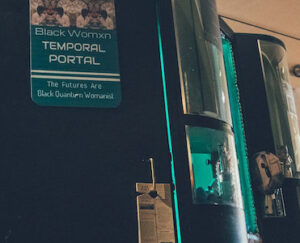
Black Quantum Futurism, Black Women Temporal Portal Guidebook
(Black Quantum Futurism)
Any investigation of Black time should start with the visionary, paradigm-shifting work of Rasheedah Phillips and Camae Ayewa/Moor Mother, aka Black Quantum Futurism. With essays, rituals, resources, and links, this brief book is a “nonlinear timescape/tapestry/temporal map/toolkit preparing us for the Black womanist, quantum future(s).” Are you ready for cultural recovery and liberation? Get Ready. Stay Ready.
*This book can help. Breaking down the core principles of BQF, the book includes a “Black Women Temporal Inventory and Memory Survey” to help you map your own time and plot your own dreams.
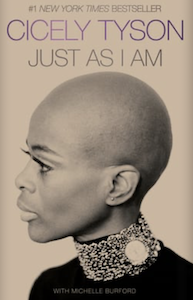
Cicely Tyson, Just As I Am
(HarperCollins Publishers)
In this wise memoir, a legendary African American actress chronicles almost a century of her life. Before her iconic roles in Sounder, The Autobiography of Miss Jane Pitman, and How to Get Away with Murder (as Viola Davis’ mother), Tyson was a hardworking mother craving something more. Here we watch her rise and self-realize, tackle stage and screen, rub shoulders with stars, and embark on an epic relationship with Miles Davis. Listening to this book on walks, I hear Ms. Cecily’s voice and think about my elders. I feel both awed and amazed.
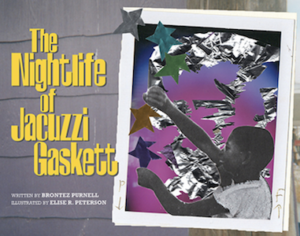
Brontez Purnell & illustrations by Elise R. Peterson, The Nightlife of Jacuzzi Gaskett
(Dottir Press)
On the other end of the spectrum dwells Black childhood. This vivid picture book tells the tale of an 11-year-old boy who takes care of his baby brother while his mom goes out on the town. Countering stereotypes of the irresponsible single Black mother or the delinquent Black youth, this book showcases Jacuzzi’s love for his baby brother and their special time together. Like Purnell’s recent (very) adult book 100 Boyfriends, this book is funny, smart, surprising, and irreverent. And so is Jacuzzi himself. Peterson’s extraordinary photo collages also bring a jazzy magic to every page.
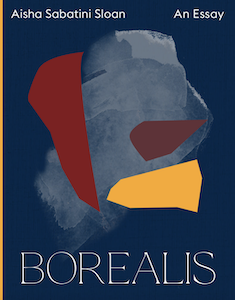
Aisha Sabatini Sloan, Borealis
(Coffee House Press)
In this book-length essay, a queer biracial Black woman in Homer, Alaska contemplates the whiteness of the landscape and the urgency of the Black figure. Poetic, trenchant, and often quite funny, Sabatini Sloan ruminates on past girlfriends, incarceration, boredom, the symbols in Jean Toomer’s Cane, and especially the icy artwork of Lorna Simpson. I read almost this entire book traveling to and from an art opening in Pasadena, vibing with its combination of isolation and public space. Complete with glaciers and pesky bald eagles, this is a perfect book for winter dreaming.
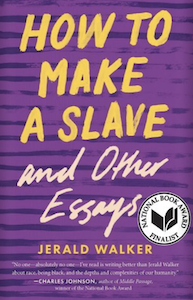
Jerald Walker, How to Make a Slave and Other Essays
(Mad Creek Books)
On that same trip to Pasadena, I bought this slender, explosive essay collection. With sharp intelligence, biting wit, and surprising pathos, Walker observes 21st century life as a Black man in America. In the astonishing title essay, he reconstructs and deconstructs Black history with “crayons, popsicle sticks and glue” and, of course, “cotton balls” for Frederick Douglass’s white Afro. Walker then weaves in MLK’s FBI sex tape, bong hits, a former classmate they all called Congo, and his younger son’s first experience of racism. Walker’s ability to remix the enduring everyday becomes a marvel to behold.
Mimi Tempestt, The Monumental Misrememberings
(Co-Conspirator Press)
Printed in purple ink, this audacious poetry debut arrives in a gorgeous risographed edition. On the cover, we encounter an altered diagram of Saartje Baartman (aka the Venus Hottentot) with the superimposed words “Cut Here,” “Here” “And Here,” and “CORPSE / ON DISPLAY.” This announces the book’s central preoccupation: the pervasive dismembering/misremembering of Black women’s bodies. Tempestt re/marks on the trauma in her line/age/s and then dreams something better: “here is where: / i am not beaten i am not silenced / […] now is when we start.”
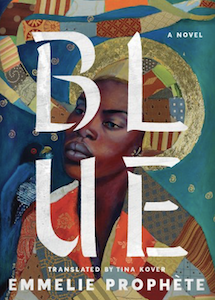
Emmelie Prophète (translated by Tina Kover), Blue
(Amazon Crossing)
This impressionistic Haitian novel also evokes matrilineage. Navigating the airport in Miami en route to Port-au-Prince, the protagonist recalls the silences of the women in her family. She also ruminates on travel—migration, dislocation, and exile: “I am ashamed of my flights, my escape… the smell of blood I have received; and those voices… those cries echoing in my head.” Published originally in French in 2007 as Le testament des solitudes, this book now appears in English for the first time thanks to Kover’s translation.

Anaïs Duplan, I Need Music
(Action Books)
Another child of Haiti is the extraordinary Anaïs Duplan, whose latest book offers poetry as ekphrasis. That sounds a lot stodgier than it is because really, he’s hosting a kinky Black artist block party where the first line is “Wow, where has his crotch gone?” Here the body comes apart or sometimes just comes in pleasure or through conjure or art or in a new creative reflection of myriad Black mirroring. Duplan creates and keens toward Black, queer futures: “To be witnessed, remembered, ‘n’ held.”
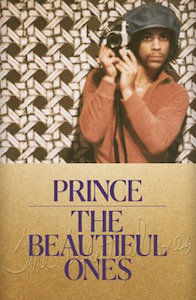
Prince, The Beautiful Ones
(One World)
One of the greatest blessings of my life is that I got to live at the same time as Prince. His death remains a devastation. Lucky for all of us, his music lives on and so does this book. Not a comprehensive autobiography (Prince had just started writing it when he died), it features notes toward the projected book along with astonishing photographs, lyric sheets, and handwritten pages. (The pictures of his parents are especially striking.) Poring over this time capsule, I’m reminded of the fragility of life, the buoyancy, and how much we need to art to survive.
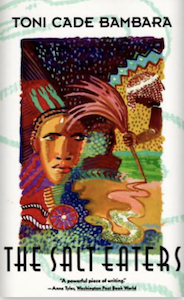
Toni Cade Bambara, The Salt Eaters
(Vintage)
“Are you sure sweetheart, that you want to be well?” The opening question of this classic 1980 novel resonates profoundly right now. In the Covid era, what is Black healing? Post George Floyd and Breonna Taylor and Amir Locke (and . . .), what is Black resistance? What is our spirituality? How does the collective converge? Full of vivid characters and dreamscapes, this book raises and responds to these questions. It becomes a medicine and a charge. If you haven’t read it, read it. If you have read it, read it again. (And consider ordering your copy from here.)
__________________________________
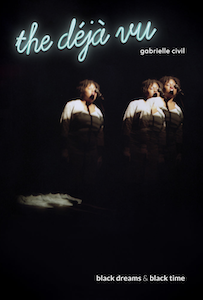
Gabrielle Civil’s book the déjà vu is forthcoming from Coffee House Press in February 2022.
Gabrielle Civil
Gabrielle Civil is a Black feminist performance artist, poet, and writer originally from Detroit. She has premiered fifty performance artworks around the world. Her performance memoirs include Swallow the Fish, Experiments in Joy, ( ghost gestures ) and in and out of place. She teaches at the California Institute of the Arts. The aim of her work is to open up space. Her new book is the déjà vu.












